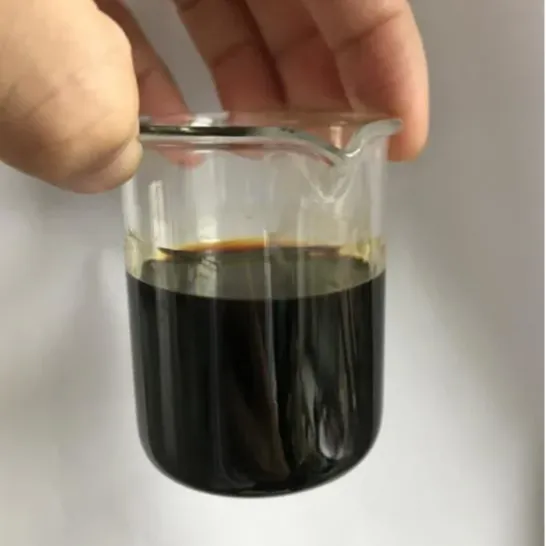
Th11 . 18, 2024 23:28 Back to list
bio insecticides
Bio-Insecticides Sustainable Solutions for Pest Management
In recent years, the heightened awareness of environmental issues and the adverse effects of synthetic pesticides has led to a significant interest in bio-insecticides. These natural alternatives not only mitigate the harmful impacts associated with chemical insecticides but also promote sustainable agricultural practices. This article explores the concept of bio-insecticides, their benefits, types, and challenges, and their potential role in modern agriculture.
Understanding Bio-Insecticides
Bio-insecticides are derived from natural materials, including plants, microorganisms, or minerals. They function by targeting specific pests while minimizing damage to beneficial organisms, including pollinators and natural pest predators. Unlike their synthetic counterparts, bio-insecticides often have a lower toxicity profile and break down more quickly in the environment, reducing the risk of residue accumulation in soil and water.
Benefits of Bio-Insecticides
1. Environmental Impact One of the foremost benefits of bio-insecticides is their reduced environmental impact. Synthetic pesticides can lead to soil degradation, water contamination, and harm to non-target species, including beneficial insects and wildlife. Bio-insecticides, on the other hand, are generally safer for the ecosystem and promote biodiversity.
2. Human Health The use of chemical pesticides has been linked to various health issues in humans, ranging from acute poisoning to chronic conditions. Bio-insecticides present a healthier alternative, reducing the exposure of farmworkers and consumers to toxic chemicals.
3. Resistance Management Continuous use of synthetic insecticides can lead to resistance among pest populations. Bio-insecticides play a crucial role in integrated pest management (IPM) strategies, facilitating the rotation of pest control methods and reducing the likelihood of resistance development.
4. Sustainability The increasing global demand for sustainable agriculture makes bio-insecticides a compelling option. They support organic farming practices and align with consumer preferences for environmentally friendly products.
Types of Bio-Insecticides
Bio-insecticides can be categorized based on their origins and mechanisms of action
bio insecticides

- Microbial Bio-Insecticides These insecticides consist of living microorganisms, such as bacteria, fungi, or viruses, that infect and control pest populations. For example, *Bacillus thuringiensis* (Bt) is a well-known bacterial bio-insecticide that targets specific caterpillar pests, causing them to stop feeding and ultimately die.
- Plant-Based Bio-Insecticides Derived from plants, these insecticides utilize natural compounds to deter or kill pests. Neem oil, extracted from the neem tree, is a popular bio-insecticide that interrupts pest development and acts as a repellent.
- Mineral-Based Bio-Insecticides Some bio-insecticides are formulated from mineral sources, such as diatomaceous earth, which works by physically damaging the exoskeletons of insects, leading to dehydration and death.
Challenges in Bio-Insecticide Adoption
Despite their numerous advantages, the adoption of bio-insecticides faces several challenges
1. Efficacy and Reliability Some bio-insecticides may be less effective than synthetic options, particularly under certain environmental conditions. Farmers may hesitate to switch due to concerns about pest control efficacy.
2. Lack of Awareness Many agricultural practitioners and consumers are unfamiliar with bio-insecticides and their benefits. Increased education and outreach are necessary to promote their use.
3. Regulatory Barriers The registration and approval processes for bio-insecticides can be lengthy and complicated, hindering their entry into the market.
4. Market Penetration The bio-insecticide market is still emerging, with fewer products readily available compared to synthetic alternatives, which may limit farmers' options.
Conclusion
Bio-insecticides represent a promising avenue in the quest for sustainable pest management solutions. With their environmental benefits, reduced health risks, and integration into IPM strategies, they offer a viable alternative to synthetic pesticides. However, overcoming existing challenges will require collaborative efforts from researchers, policymakers, and agricultural practitioners. By promoting awareness, enhancing effectiveness, and streamlining regulatory processes, bio-insecticides can play an essential role in the future of sustainable agriculture, ensuring food security while preserving the health of our planet.
-
Powerful Fungicide for Optimal Crop Health & Yield Protection
NewsAug.23,2025
-
Azoxystrobin Fungicide: Advanced Crop Protection Solutions
NewsAug.22,2025
-
Willowood Imidacloprid: Best Broad-Spectrum Insecticide Solution
NewsAug.22,2025
-
Atrazine Herbicide: Selective & Effective Weed Control for Sale
NewsAug.21,2025
-
Azoxystrobin: Broad-Spectrum Fungicide Solutions
NewsAug.11,2025
-
Best EPA Boscalid: Superior Crop Fungicide for Max Yields
NewsAug.11,2025
